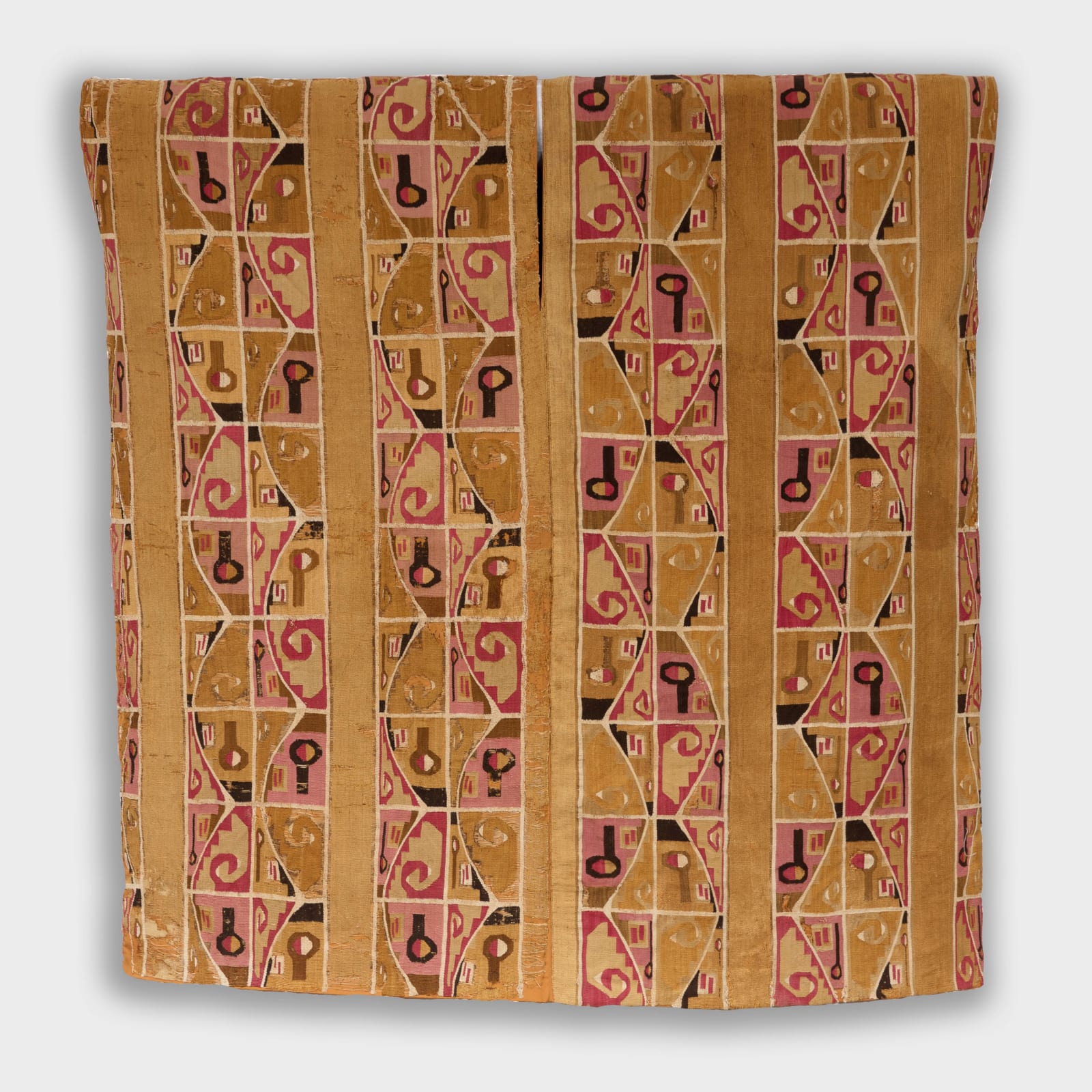





Huari Culture 100 AD-1200 AD
37'8" x 37'4" in
Further images
This rare and almost complete densely woven tapestry tunic was created so acutely stylised and abstracted that the figures are essentially unrecognisable, perhaps in a deliberate attempt by the elite to monopolise their interpretation. Abstract figures distorted almost beyond recognition may also be an attempt to represent the shamanic transformation and drug-induced trance consciousness which were part of Wari religious ceremonies.
In the Wari and Tiwanaku civilisations, images from stone carvings were repeated, abstracted, compressed, and expanded, emphasising the rectilinear and thus imperial power and its ability to order the world. The pattern on this tunic, a profile face with a vertical split eye and crossed fangs, and an inverted stepped fret motif, is a unique Wari design.
We can borrow this association between Wari textiles and architecture from art historian Rebecca Stone and archaeologist Gordon McEwan. In their seminal piece on the subject, they argue that both patio groups and elites’ tunics are built using an “additive mode of production.” In other words, both a textile and a wall are built “row by row” from the ground up. Further, both elite textiles and Wari complexes contain what Stone and McEwan call “anomalies.” In architecture, these anomalies include curved walls. In textiles, they occur as a change in the expected color pattern. Thus, there is an element of chaos that exists across Wari works of art, breaking expected patterns. By orchestrating the construction of these chaotic elements, elites further denied commoners’ access to the underlying logic. It is worth noting as a well that both textiles and architecture are “lived in” spaces. Elites chose to spend their entire lives in their organised chaos, within a system only they could comprehend. They could work in this world of confusion, choosing to wear dramatic colours and to wander through the confusing halls of Wari cities, in life and in death.
Exhibitions
Hauser & Wirth, Zurich, 1995Paul Kasmin, New York, 1995
Ancient Textiles from the Andes, the Whitworth, Manchester, 2019
Publications
Pre-Colombian Andean Textile Art, p.27, Carla Sozzani Editore (1991)Time Warps, p.117 Hauser & Wirth (1995)
Ancient Textiles from the Andes, the Whitworth, Manchester, 2019
Confluences in Art, p.140, Paul Hughes Fine Arts (2019)
Join our mailing list
* denotes required fields
We will process the personal data you have supplied in accordance with our privacy policy (available on request). You can unsubscribe or change your preferences at any time by clicking the link in our emails.





